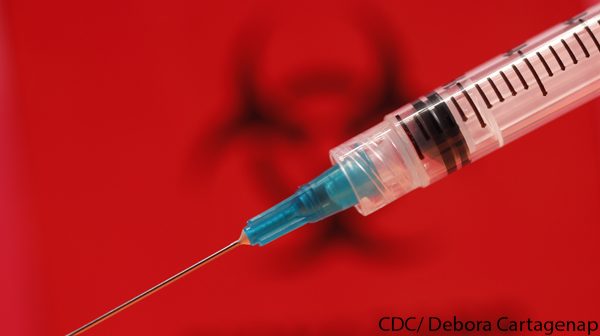
The Substance Abuse and Mental Health Services Administration (SAMHSA) also supports these programs; not only does it give out needles, it also encourages patients to seek treatment. Programs have been successfully started in many states, including West Virginia, Kentucky, and North Carolina.8
Explore This Issue
ACEP Now: Vol 37 – No 09 – September 2018Although not everyone is ready to accept these concepts, many are starting to open their eyes to their value. After what can only be described as a devastating rise in newly diagnosed cases of HIV in Indiana due to oxymorphone and heroin, clean needle exchanges were introduced in 2015, which helped reduce new hepatitis C cases in one county by 50 percent.9 However, even with that impact, county officials did not vote to reapprove the program this year. In Missouri, needle exchange legislation passed the state’s House of Representatives this year, and we hope it will pass the Senate next year.
Safe Injection
But what else can you do in the emergency department for patients who aren’t ready to quit? Well, you can start by having a short discussion about drug use and safe injection practices. You can discuss how to properly clean the skin with alcohol swabs and use clean water. Drug users will commonly use a filter such as cotton, but it may be dirty or have blood products on it, which can lead to infectious complications. The benefit, in addition to decreased transmission of hepatitis C and HIV, should include fewer admissions for soft tissue infections and endocarditis.
If it is possible and doesn’t place someone else at risk, patients shouldn’t use alone. If they overdose, no one will be available to administer naloxone or call 911. You can frame this discussion along the lines of, “We want you to quit and hope you do, but we understand you might use again.”
Once again, you are not expected to condone drug use, but judgment may stand in the way of public health and individual patient safety. It’s somewhat analogous to what you might tell patients with diabetes or hypertension who need to lose weight but aren’t ready to change their diet.
Finally, consider safe injection facilities. US Surgeon General Jerome Adams, MD, MPH, recently spoke to emergency physicians at ACEP’s Leadership & Advocacy Conference in May. Among the topics of conversation were addiction and the opioid epidemic. He discussed harm-reduction strategies, including safe injection facilities.10 At these facilities, injection drug users can bring their own heroin, get clean needles and alcohol swabs, and safely inject. Facility providers can dispense naloxone should an overdose occur. They can also try to intervene and discuss referral to treatment with those interested.
Pages: 1 2 3 4 | Single Page





One Response to “Your Overdose Patient Doesn’t Want to Quit—Now What?”
September 16, 2018
Gary Roberts, MD JDFifteen years ago I attended a (state mandated) CME program on pain. It was presented by UC Davis and entitled, “The War on Pain.” We were advised that UNDERTREATMENT of pain was a medical crisis and that we were ethically obliged to provide adequate quantities of narcotics. The message, better to over-treat than otherwise.
Two points:
1. the opioid crisis is iatrogenically mediated and legislatively induced. Physicians are taking the heat for the unintended (nonetheless foreseeable) consequences of “do-gooder” legislators whose attempts to control medical practice have backfired in a spectacular fashion.
2. how is dealing with an opioid addict different from dealing with a smoker or alcoholic?